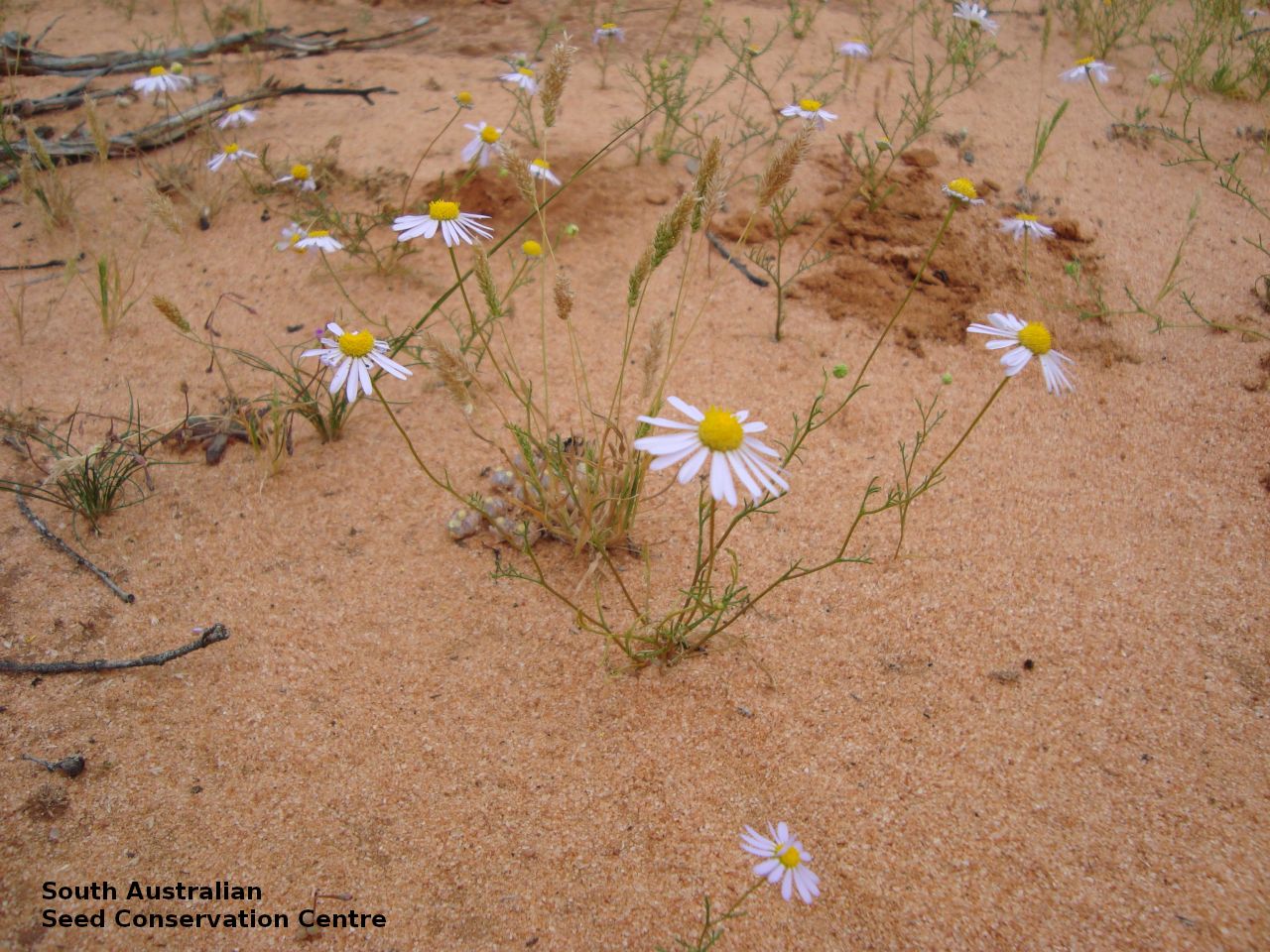
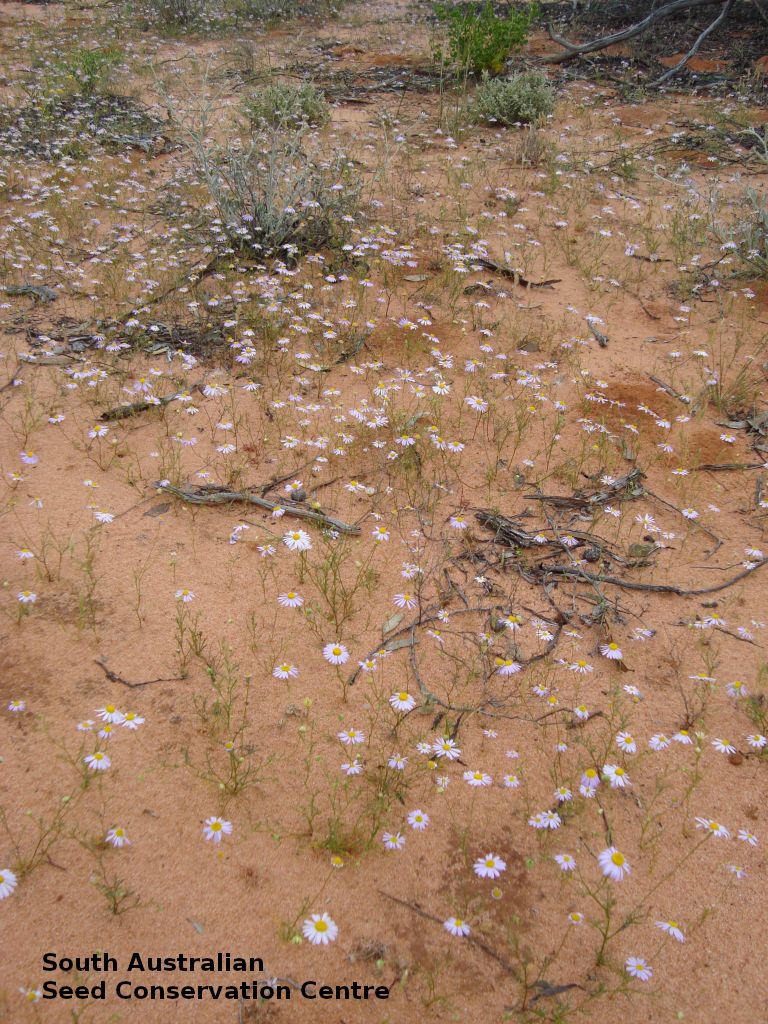
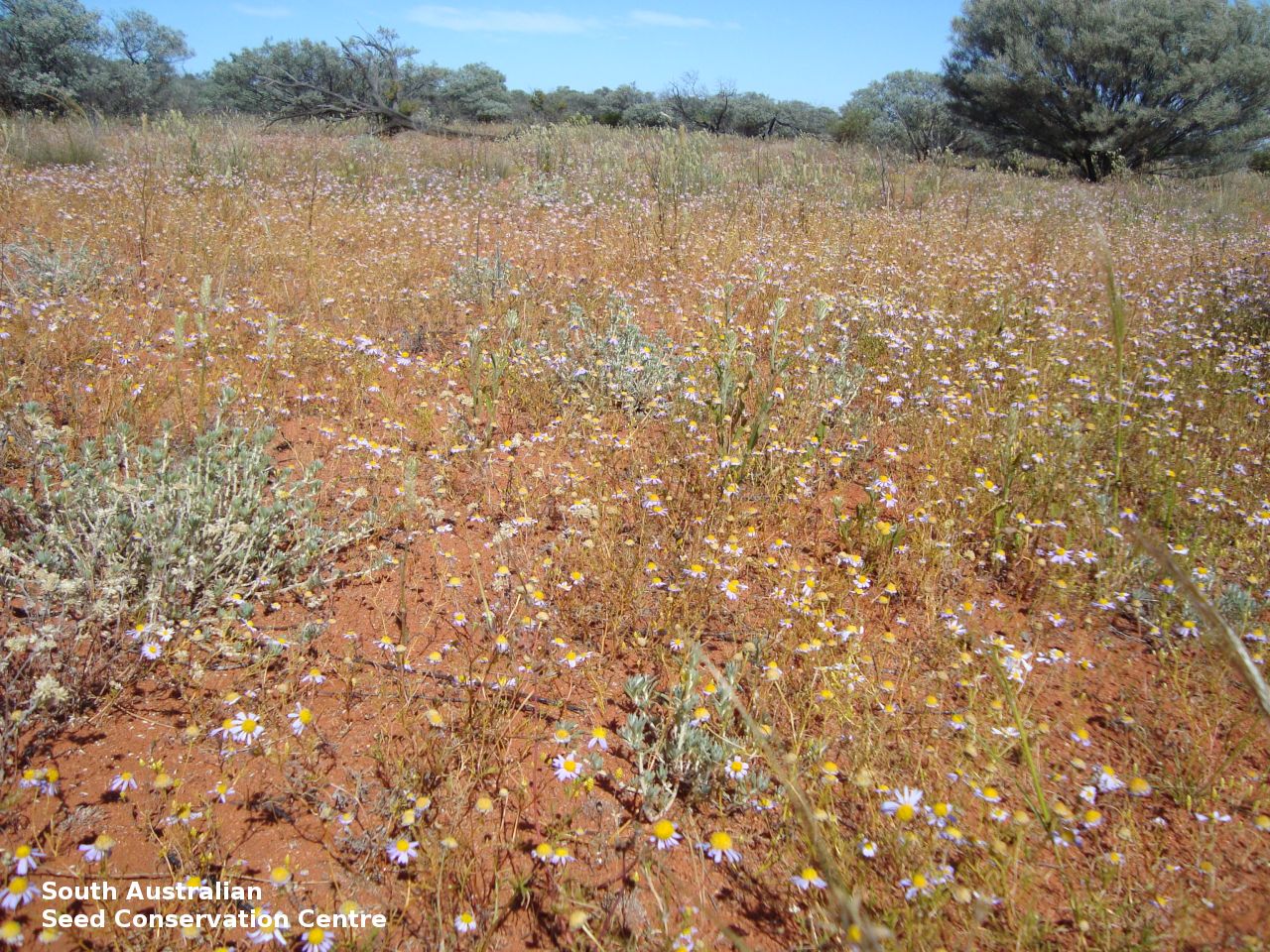
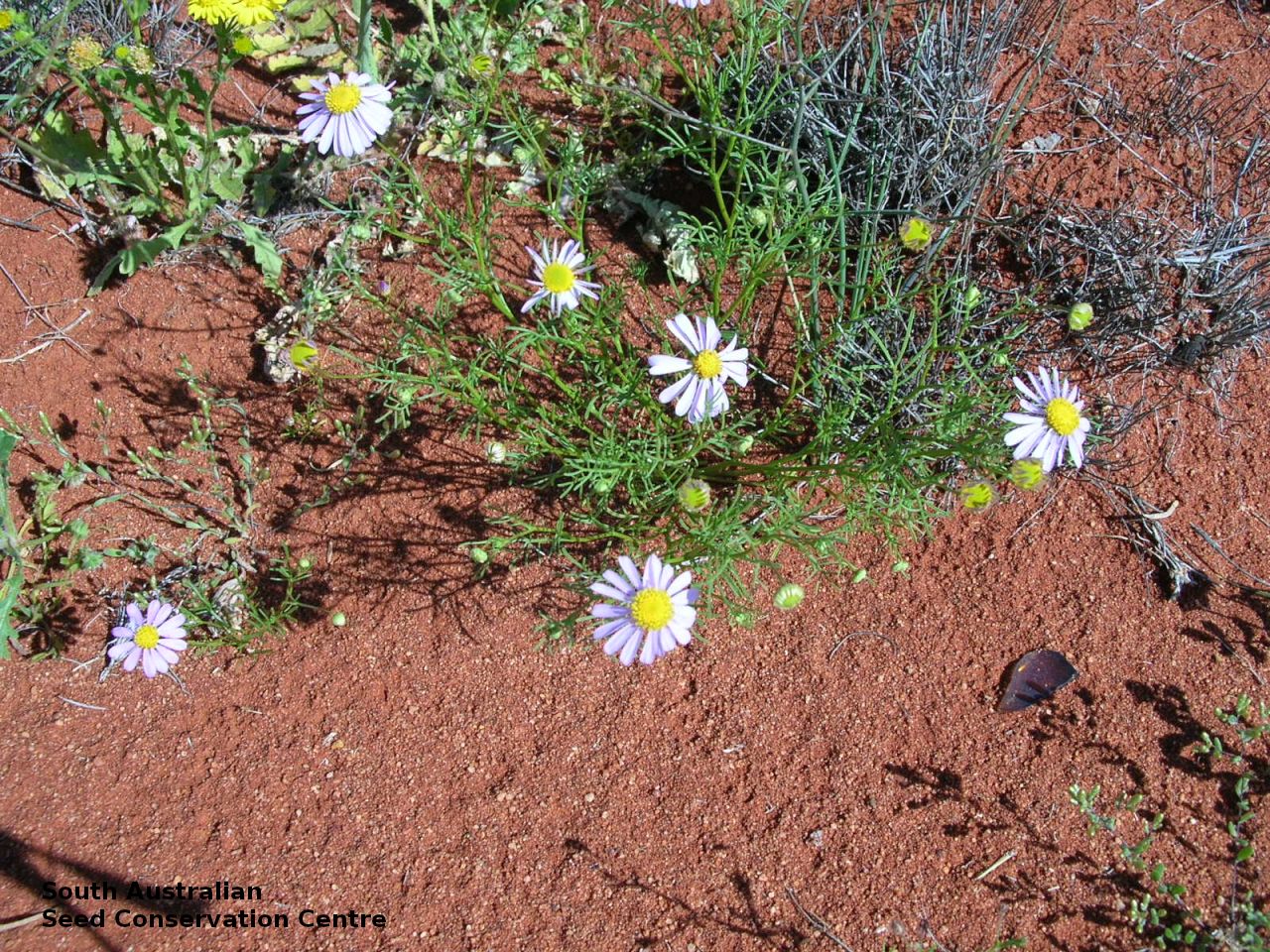
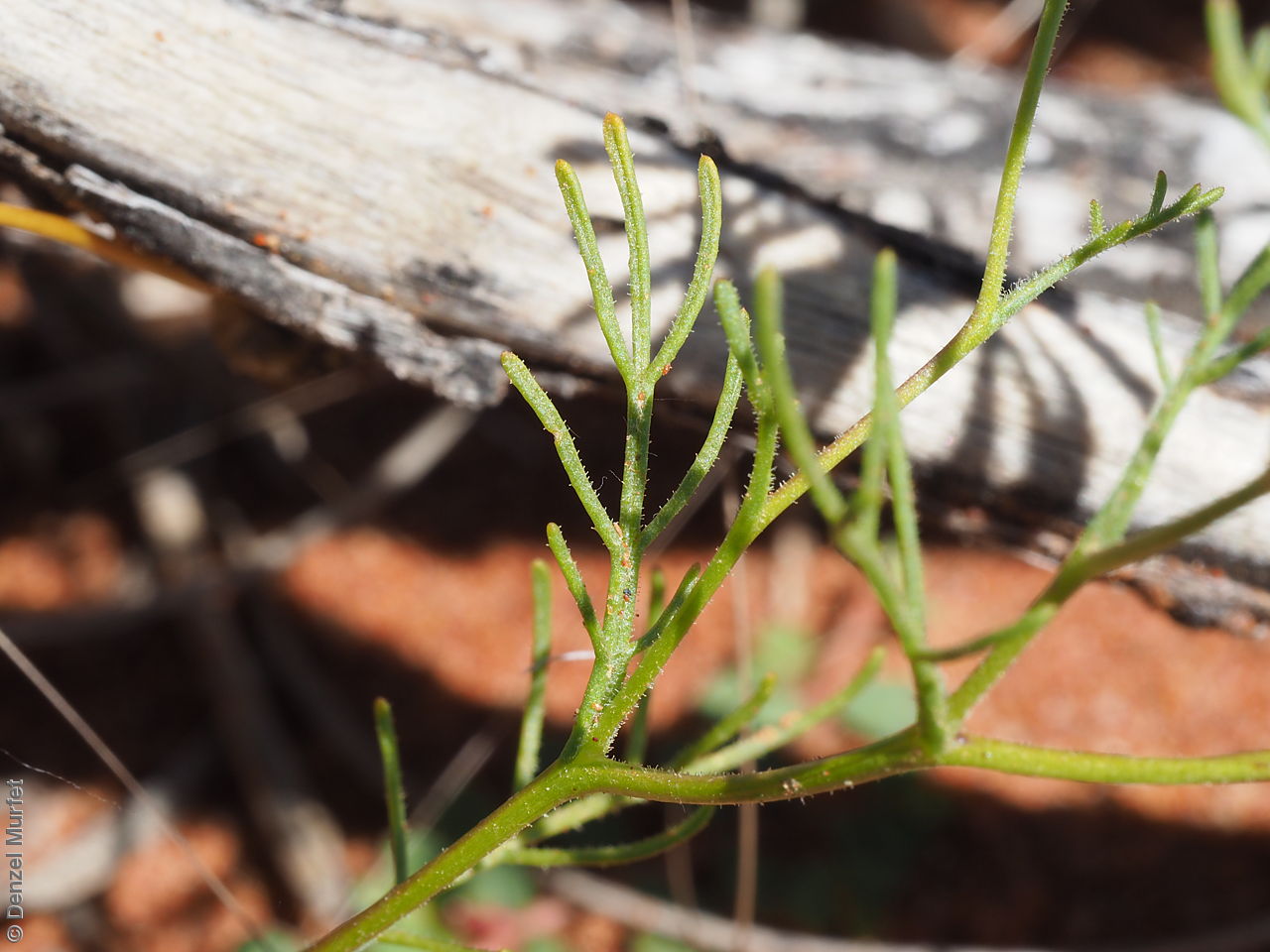
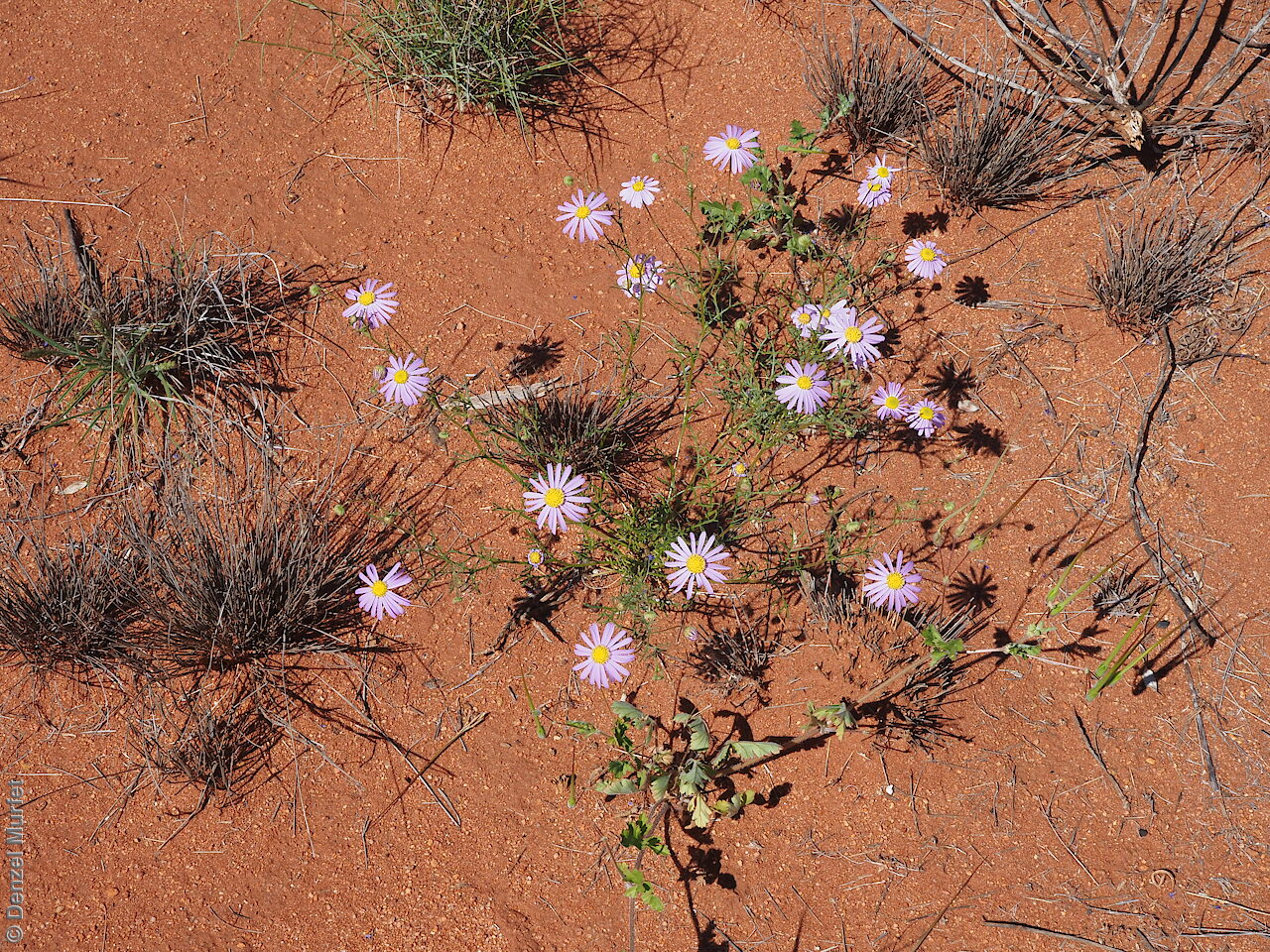
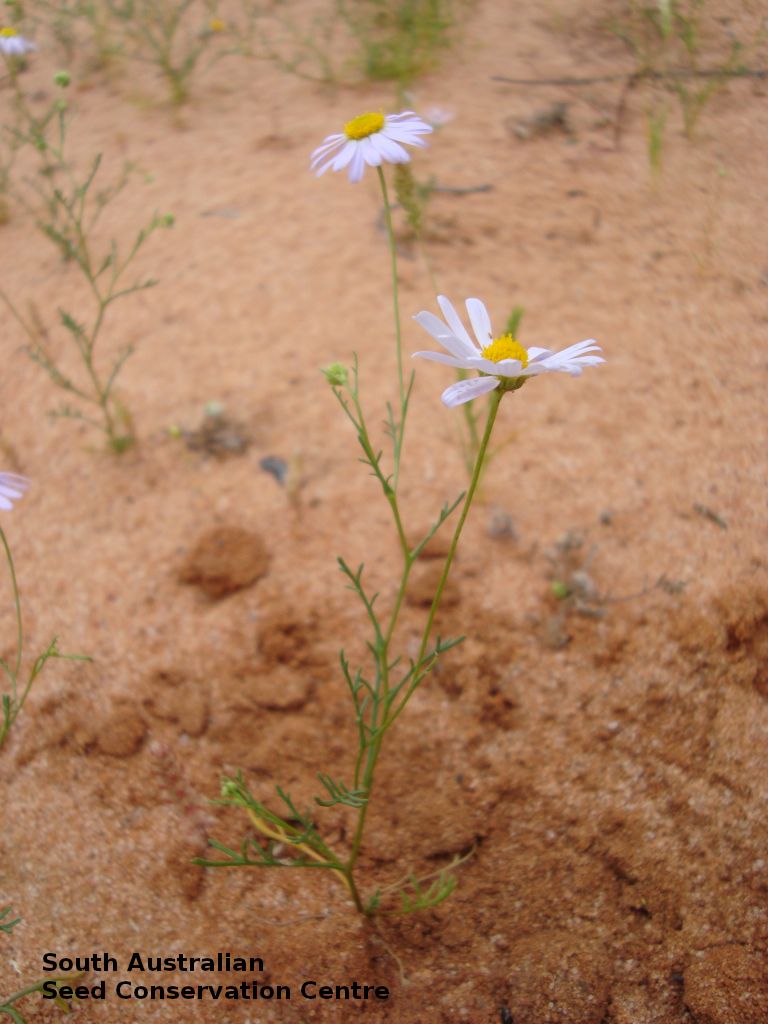
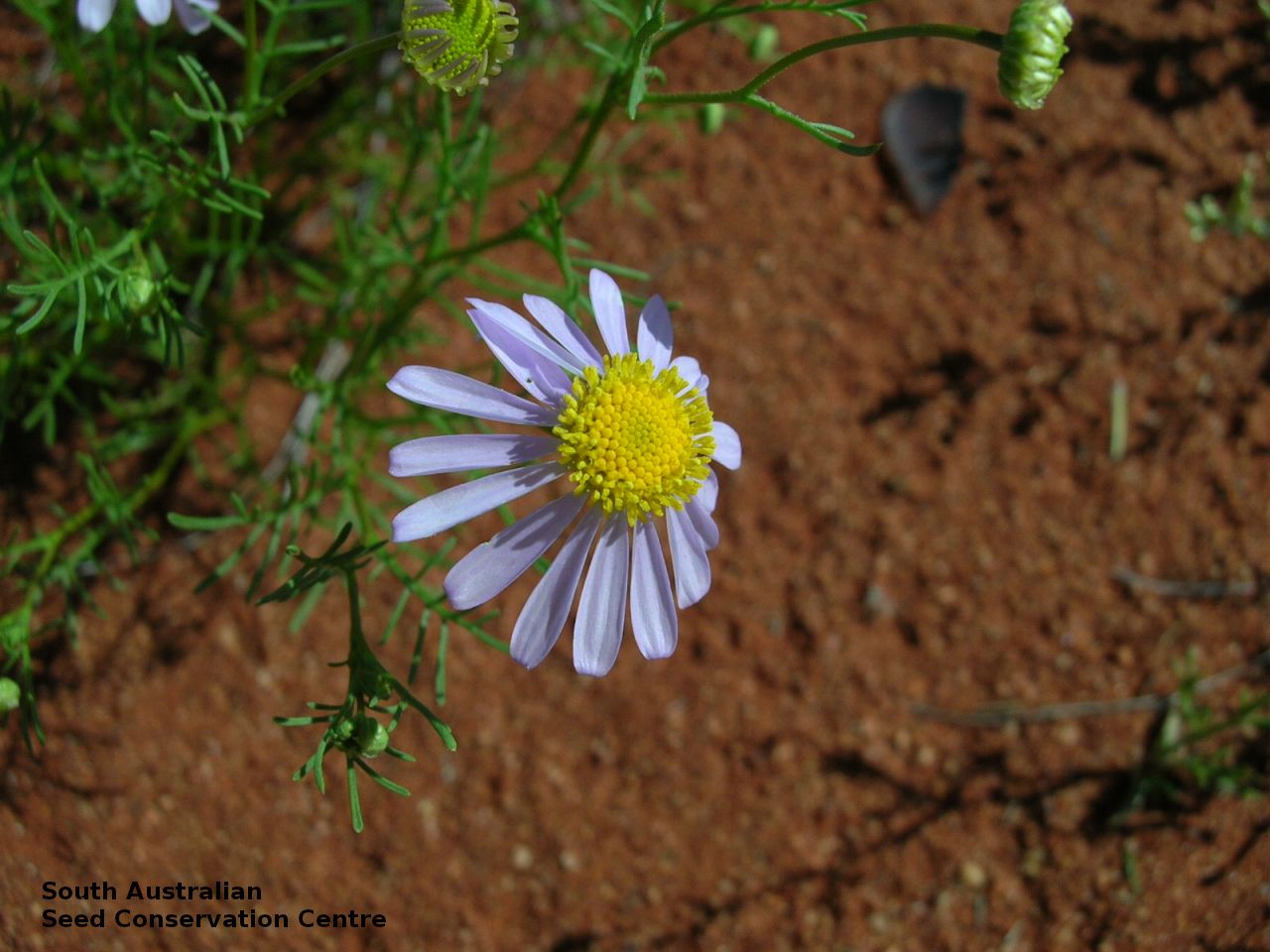
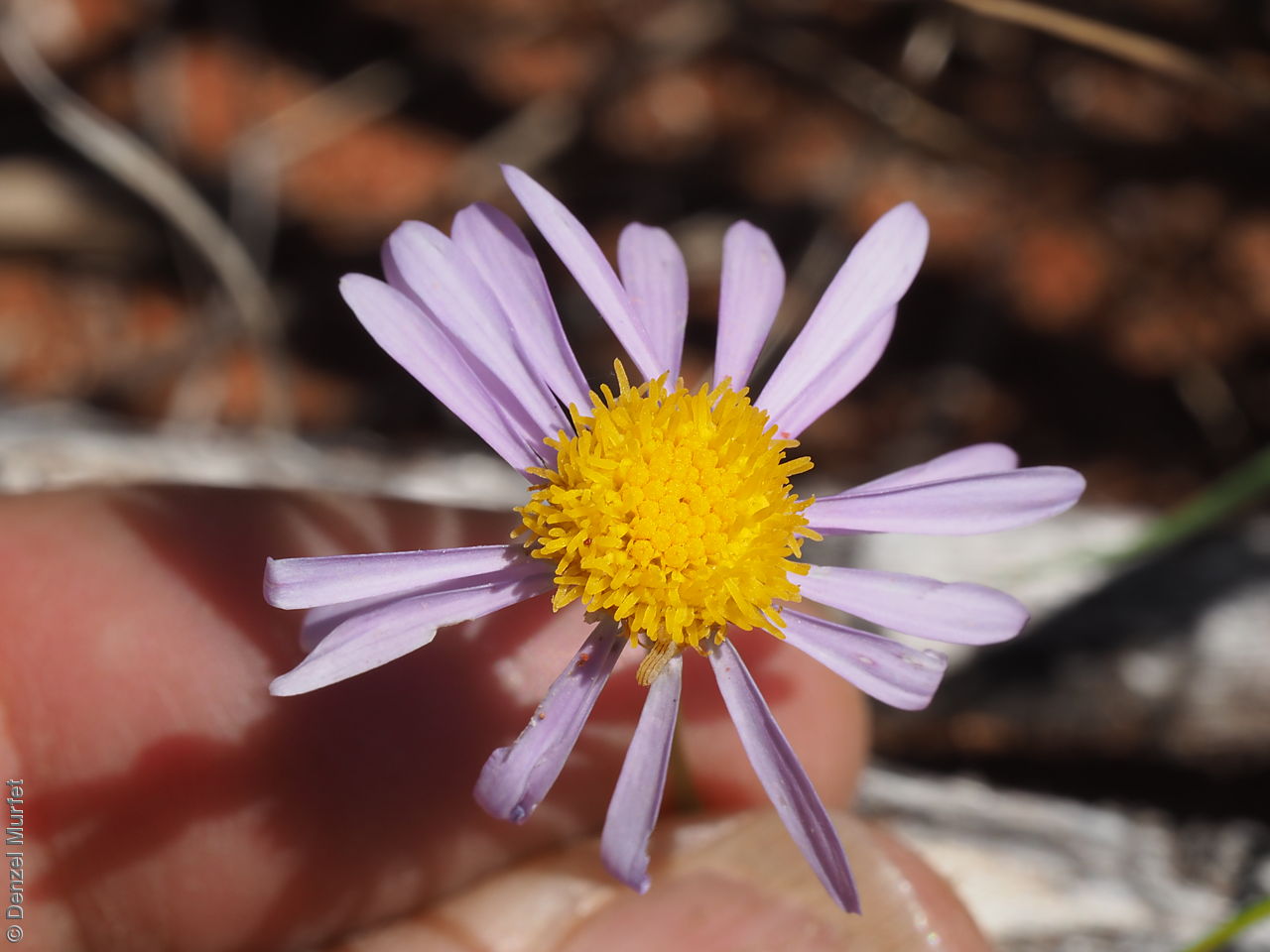
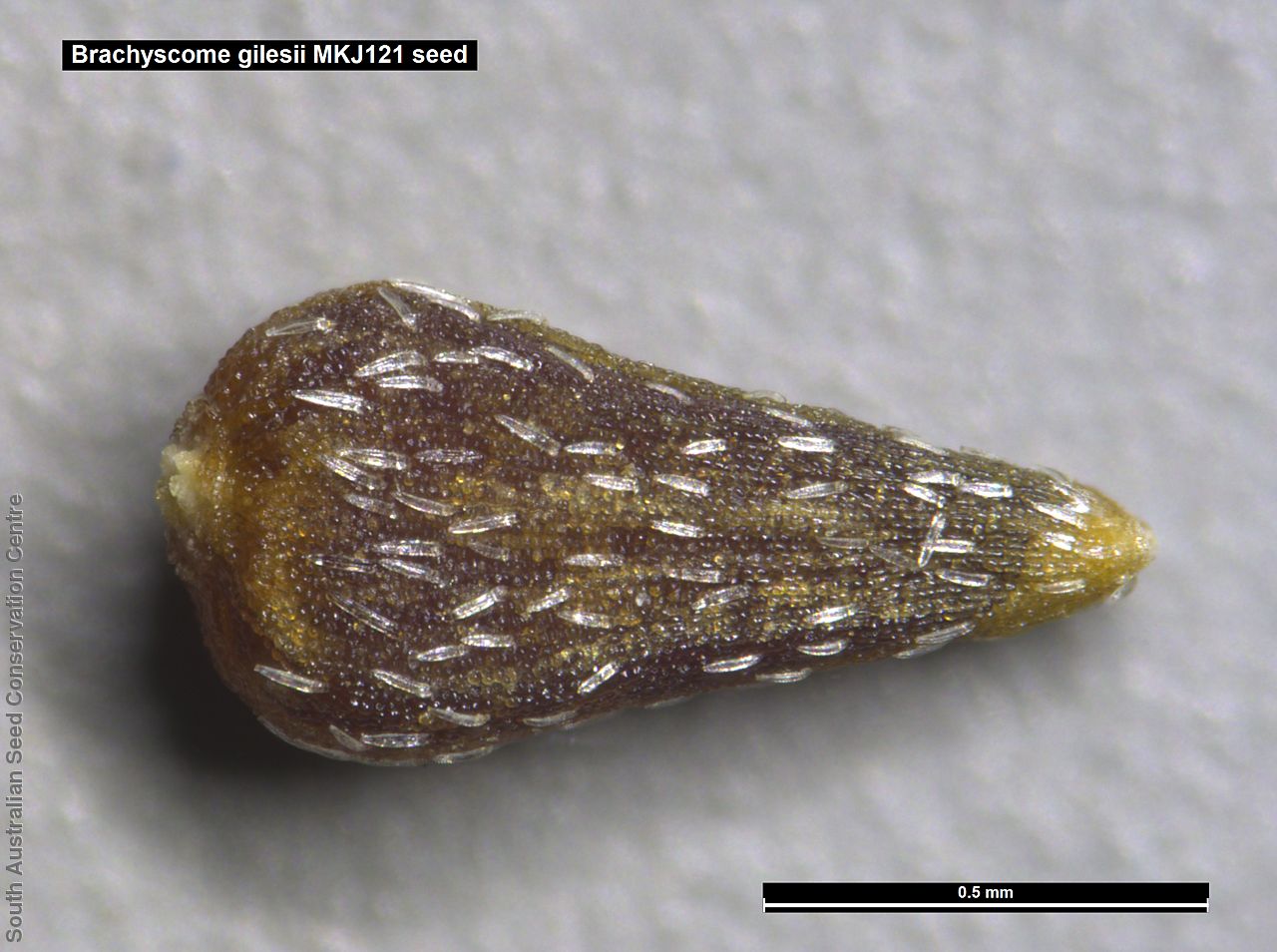
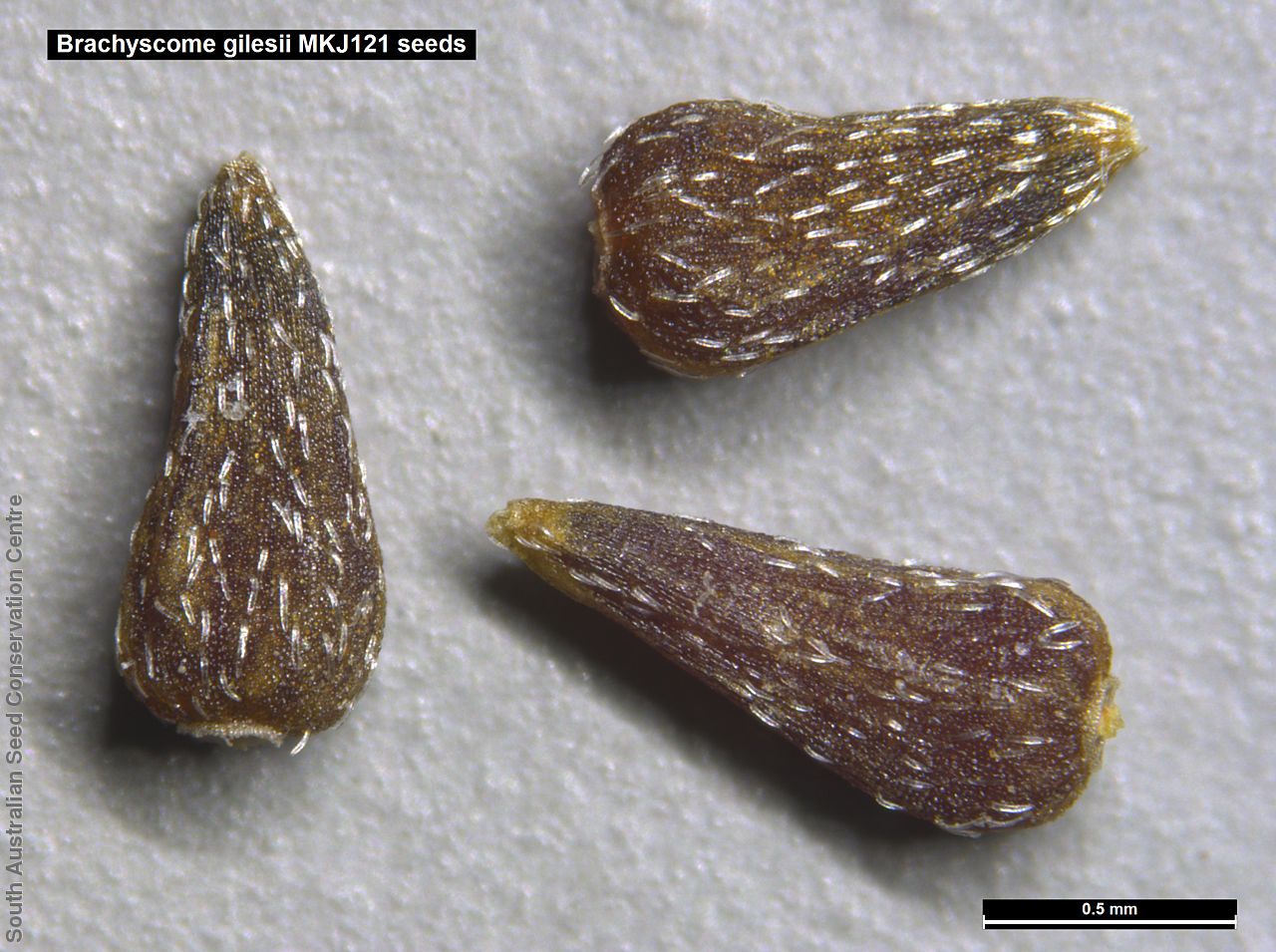

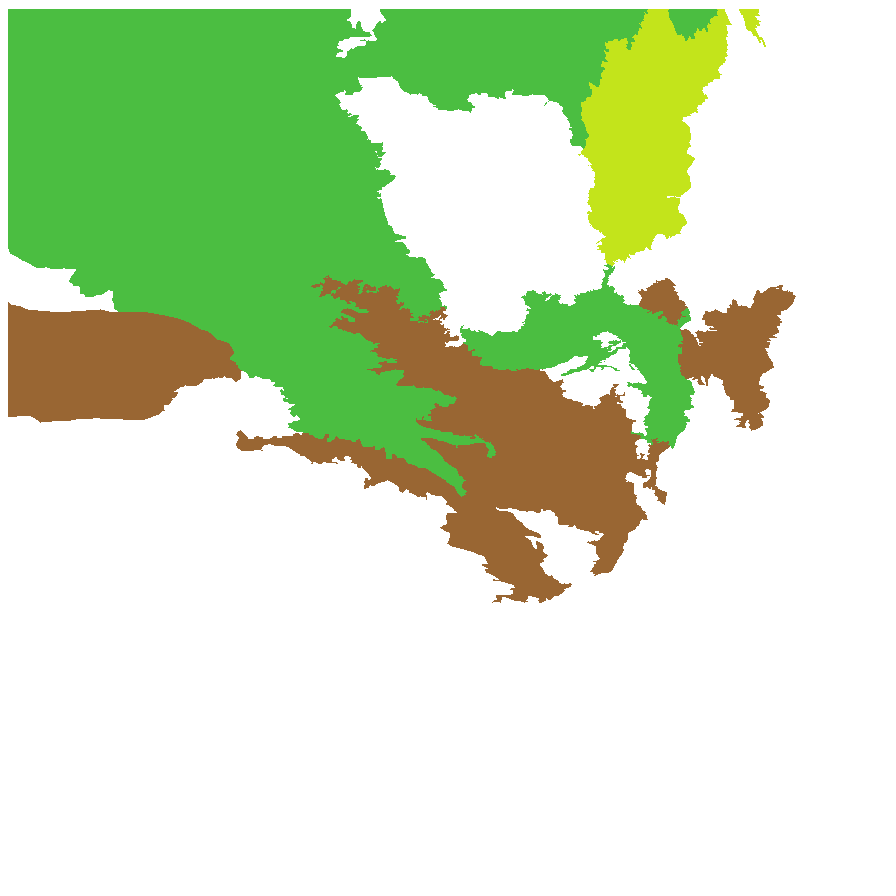
Botanical art
Prior names
Brachyscome iberidifolia
Brachycome iberidifolia
Brachycome iberidifolia var. glandulifera
Brachycome iberidifolia
Etymology
Brachyscome from the Greek 'brachys' meaning short and 'kome' meaning hair; referring to the short bristles or hairs of the pappus. Gilesii named in honour of the explorer Ernest Giles (1835–1897), who collected plants for Ferdinand Mueller and was apparently the first to record the species, having collected it "between the Alberga Creek & Mt Olga" in 1873-1874, from Mount Eba in 1880 and near Mount Everard in 1882.
Distribution and status
Widely distributed in arid regions of South Australia, from the N.T. border to as far south as northern Eyre Peninsula, growing in very open Acacia dominated shrubland or woodland on sand or sandy loam. Also found in the Northern Territory and a single specimen, from the Mulligan River area, recorded for Queensland. Native. Common in South Australia. Very rare in Queensland. Common in Northern Territory.
Herbarium regions: North Western, Lake Eyre, Gairdner-Torrens, Flinders Ranges, Eastern, Eyre Peninsula
NRM regions: Alinytjara Wilurara, Eyre Peninsula, South Australian Arid Lands
AVH map: SA distribution map (external link)
Plant description
Annual herb to 40 cm tall with ascending to erect stems and major branches to more than 30 cm long. Leaves with the first basal and near basal leaves and 1 or 2 uppermost leaves linear and entire but most leaves are lobed to 40 mm long and covered in glandular hairs. Flowers white, mauve, purple, pale purple and bluish-pink. Flowering between August and November. Fruits are brown daisy-heads. Seeds are brown ovoid to pyramid-shaped seed to 1 mm long and 0.5 mm wide, covered in scattered hairs. Seed embryo type is spatulate fully developed.
Seed collection and propagation
Collect seeds between October and December. Pick heads that are maturing, drying off, with brown seeds that dislodge easily. Place the seed-heads in a tray and leave to dry for a week. Then gently rub the heads by hand to dislodge the seeds. Use a sieve to separate the unwanted material. Store the seeds with a desiccant such as dried silica beads or dry rice, in an air tight container in a cool and dry place. From two collections, the seed viability was average to high, ranging from 555 to 085%. This species has physiological dormancy that needs to be overcome for the seed to germination.Gibberellic acid (250 mg/L added to water agar) can promote germination across all seasons, and potassium nitrate (100 mg/L added to water agar) can increase germination under summer conditions. After-ripening at 45 degrees celsius for 2 - 6 months can release dormancy.
| Location | No. of seeds (weight grams) | Number of plants | Date collected | Collection number Collection location | Date stored | % Viability | Storage temperature |
|---|---|---|---|---|---|---|---|
| BGA | 24,600 (2.44 g) | 9-Nov-2005 | MKJ121 Gairdner-Torrens | 1-Aug-2007 | 55% | -18°C | |
| BGA | 12,700 (1.27 g) | 2-Nov-2005 | DJD167 Eyre Peninsula | 1-Aug-2007 | 85% | -18°C | |
| BGA | 8,300 (0.9 g) | 18-Sep-2009 | DJD1581 Gairdner-Torrens | 1-Jan-2012 | 93% | -18°C | |
| 200+ | 18-Sep-2009 | DJD1581 Gairdner-Torrens | 1-Nov-2017 | 93% | -18°C |
Number of plants: This is the number of plants from which the seeds were collected.
Collection location: The Herbarium of South Australia's region name.
% Viability: Percentage of filled healthy seeds determined by a cut test or x-ray.